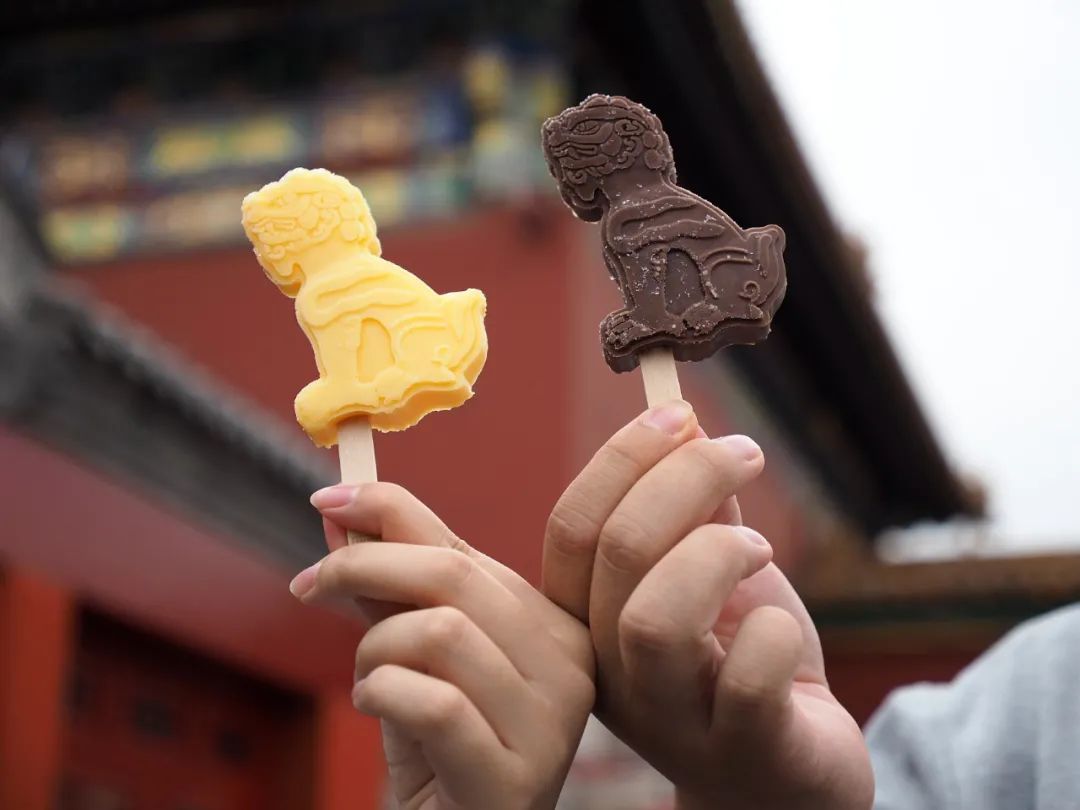According to the Double 11 statistics released by Tmall, turnover of thirteen Chinese brands including Huawei, Midea and Haier had reached 1 billion RMB by 00:35 11th November. Meanwhile, various Chinese brands such as Ecovacs Robotics, Balabala, Pechoin, and Quanyou had their turnovers over 100 million within an hour on 1st November. The performance of Chinese brands in the Double 11 Shopping Festival are outstanding among their strong competitors. The “2020 China Consumer Brand Development Report” shows that products of Alibaba occupies 72% of the China’s brand market. Evidence have shown that domestic goods are being more and more popular.

The 90s, as the main force of the shopping festival and China’s consumption upgrade, are no longer trapped by the myth of “domestic is inferior to import goods”, given that many Chinese consumers had believed that import goods are always better than domestic goods. While they are replacing blind devotion on foreign brands with focuses on quality of goods, well-performed local brands earn appreciation from the market. What are the differences in the consuming attitudes of the 80s and 90s towards domestic’s goods and imports? If differing attitudes exist among the two generations, what are the reasons behind?
Professor Fu Guoqun of Peking University Guanghua School of Management and his colleges provide strong evidences that the above monotonous thoughts are reducing with the rejuvenation of consumers by comparing the attitudes of 80s and 90s of Chinese towards domestic goods and import goods.
The conclusions are as follows:
The 80s generally held the belief that import goods are better than domestics goods in terms of both their image and functions, or in overall evaluation.
The 80s generally believe that import goods of different fields, including vehicles and mobile phones, are better than that of domestic goods.
Comparing to consumers of 80s, consumers of the 90s have less preferences on imported goods. For instance, they do not have a tendency of preferring vehicles made in Germany to those made in China.
Research Background: Less stereotype on domestic goods among consumers
Country-Of-Origin effect refers to the positive or negative influence from specific manufacturer country on consumers’ judgement on goods, including stereotypes, fame, and overall impression towards goods of specific countries.
Previous research consistently found that the Country-Of-Origin Effect was rather popular among Chinese consumers, that they regard import goods as much better than domestic goods. Despite this, research found that COO effect is dimming among consumers of developed countries. Although very few researches exhibit evidences that developing countries like China are experiencing similar cases, observations seem show that young Chinese consumers are holding more and more trust towards domestic goods.
Seeing the above, Fu and his co-workers make the prediction that consumers of the new generation in China are holding more positive views towards local products, leading to a decrease on the impression of “Imports better than domestic goods.”
Research Subject: Consumers among 80s and 90s
In order to test his hypothesis, this research make the 80s and the 90s as research subjects as to examine the influence of “Imports better than domestics” stereotype on different generations. It is because the 80s generation were born in the time when foreign products were largely imported to China. During that time the quality of domestic goods was far behind imports goods; it is natural for the 80s to firmly view domestic goods as inferior to imports.
On the other hand, the 90s were born in the rising stage of China’s economy. While they were facing more qualified domestic goods in the market, they are more objective to evaluate products made in China and are relatively less influenced by the COO stereotype.
If the above hypothesis sustains, it means that the stereotype of “Imports better than domestic goods” would eventually decrease as time goes by. In another words, the stereotype of “Imports better than domestic” is experiencing a falling trend could be witnessed and tested among Chinese consumers.

Research Method: Implicit Association Test
This research adopts Greenwald’s Implicit Association Test (IAT) in order to examine the attitude of post-80s and 90s Chinese consumers towards imports and domestic products. Implicit Association Test set response of interviewees as indicators, and it measures the implicit social cognition of individuals by checking the level of association between concepts and categories. For instance, the connection of commendatory terms with imports and derogatory terms with domestic goods can be measured with respondents’ response time when negative stereotype towards to domestic goods do exist.
It is worth mention that this research does not involve any specific brands, instead, domestic and import goods are seen as an individual or as a “symbol” during the test. It is because past research on foreign brands and Chinese brands with IAT method failed to separate influences caused by brands and by country of origin, leading to a unclear results.
Research results: Falling of “Imports better than domestic” Myth
Three experiments had been conducted in the research with the adoption of IAT method. Interviewees, which are post 80s or 90s, involves university students and employed staffs.
Experiment one examined the overall implicit attitude of consumers towards imports and domestic goods, as the test did not involve any specific type of products. It is found that post 80s consumers believe that domestic goods are not as good as import goods in terms of overall evaluation, functional evaluation and image evaluation. The results clearly show that the younger the consumers, the more positive their attitudes towards domestic goods.
The aim of experiment two is to examine if the COO stereotype exists in specific product types. Vehicles and mobile phones were selected as two test categories. During the test, interviewees were tested whether they held belief that domestic vehicles and mobiles are inferior to imported ones. Result shows that the post 80s consumers believe that domestic vehicles are not as good as imported vehicles in terms of their image and functional benefit. Despite this, there are no differences between domestic and imported vehicles among post 90s consumers.
Experiment three tends to investigate if consumers have different attitudes towards products of specific countries. Germany has been selected as the focal country as there is no emotional inclinations among Chinese consumers towards products of Germany, and that Germany has a variety of vehicles manufactured both in China and abroad, which may eliminate influence brought by specific brands. Result shows that the 80s prefer products and vehicles from Germany to products from China, while this phenomenon does not exist among 90s generation.
The oretical explanation: Life-course Theory
Life-course theory is used to explain the above research results. Life-course theory states that human’s performance and attitudes, in a large extent, are reshaped by their early life. Reviewing the living environments of 80s and 90s, environmental effects of early life stage can provide clues why two generations differ in their attitudes to domestic goods.
Social environment
The 80s were born in the beginning stage of the reform and opening up of China, and they witnessed a lot of foreign brands poured into China market while there was a lack of competitive domestic goods. With a long time dominance of foreign brands and the bombing of modern ads and promotions of imports, it is sensible for the 80s to hold more positive attitudes towards import goods. For the 90s, they were grown under the rise of domestic goods, and had more positive experiences of buying and using domestic goods than 1980’s generation. As such, 90’s generation are more favorable to domestic products.
Family environment
Researchers have found that as society goes to a wealthier stage, Chinese families are giving more emphasize towards education of their next generation. Meanwhile, the quality of life of the 90s are better than that of the 80s. This allows the post 90s to acquire more comprehensive knowledges and skills, resulting in more rational and fair judgements towards imports and domestic goods.
Amounts of information received
Consumers of 90’s are considered as the aborigines of the world of internet, and they live in a world of information explosive. As such, 90’s have more information sources and are more highly skilled in copying with the information overload. For 70’s or 80s, they are more likely to rely on identified external clues, such as brands or country of origins to make evaluations or buying choices. In other words, 90’s or post-90’s are relatively less depend on external cues such as COO to make choice but rely on objective information of the products make evaluation and choices. As a result, 90’s are less affected by the biases or stereotype of domestic or imported goods.

Insights: Marketing implications for targeting generational consumer segments
Domestic enterprises are encountering both challenges and opportunities in China market. The “legend” of “Imports better than domestic goods” are falling, and more favorable attitudes towards domestic goods are being formed among younger generations. This is good news for most Chinese companies. However, it should also be recognized that for most 80’s especially for female 80’s, they still held negative stereotype to domestic products which is big obstacles for domestic marketers. As such, Local enterprises may consider using some counterattack strategies, for instance, naming their products with imitation of the west. They may also consider marketing strategies that would remind consumers of their sense of belongings and identities, which may eliminate their negative impressions towards local goods brought by the Country-Of-Origin effect. Overseas M&A would also be helpful in reducing the adopt reluctance to domestic goods.
For post 90s consumers, enterprises need not to worry about the negative impact of Country-Of-Origin. As long as the quality and service of local goods win over that of import goods, enterprises should overtly manifest products’ Chinese origins. Further, as more and more young Chinese are taking pride in Chinese culture and China’s achievements, marketers may infuse some Chinese elements into product design or package . Meanwhile, local Chinese enterprise may also target young male consumers as their priority segment as they hold less stereotypes on the origin of products in comparison with female consumers. For example, MI phone, Huawei mobile, and Chery automobile are among Chinese companies achieving remarkable success both in China and abroad. It is worth taking note that all of their target audience are male consumers. Therefore, it seems these cases provide further supporting evidences to the major conclusion of this research.
More about the author
Fu Guoqun is the professor of marketing at Guanghua School of Management, Peking University. He was once editor-in-Chief of Journal of Marketing Science and is currently the chair of Chinese Marketing Association of Universities. He had earned his Ph.D. in Economics from Wuhan University and Ph. D. in Management from Aston University. Professor Fu's research interests include Brand Equity, Family Purchase Decision-making, Consumer Satisfaction and Dis-satisfaction, Image of Country Origin. His research has been accepted for publication in journals such as Journal of Product & Brand Management, Journal of Marketing Management, Journal of Management, Chinese Business and Market, Chinese Soft Science, Nankai Business Review, Chinese Journal of Management Science and so on.
 Programs
Programs